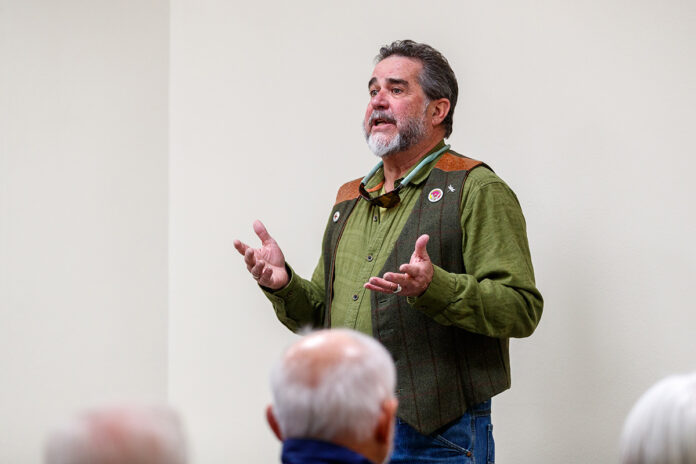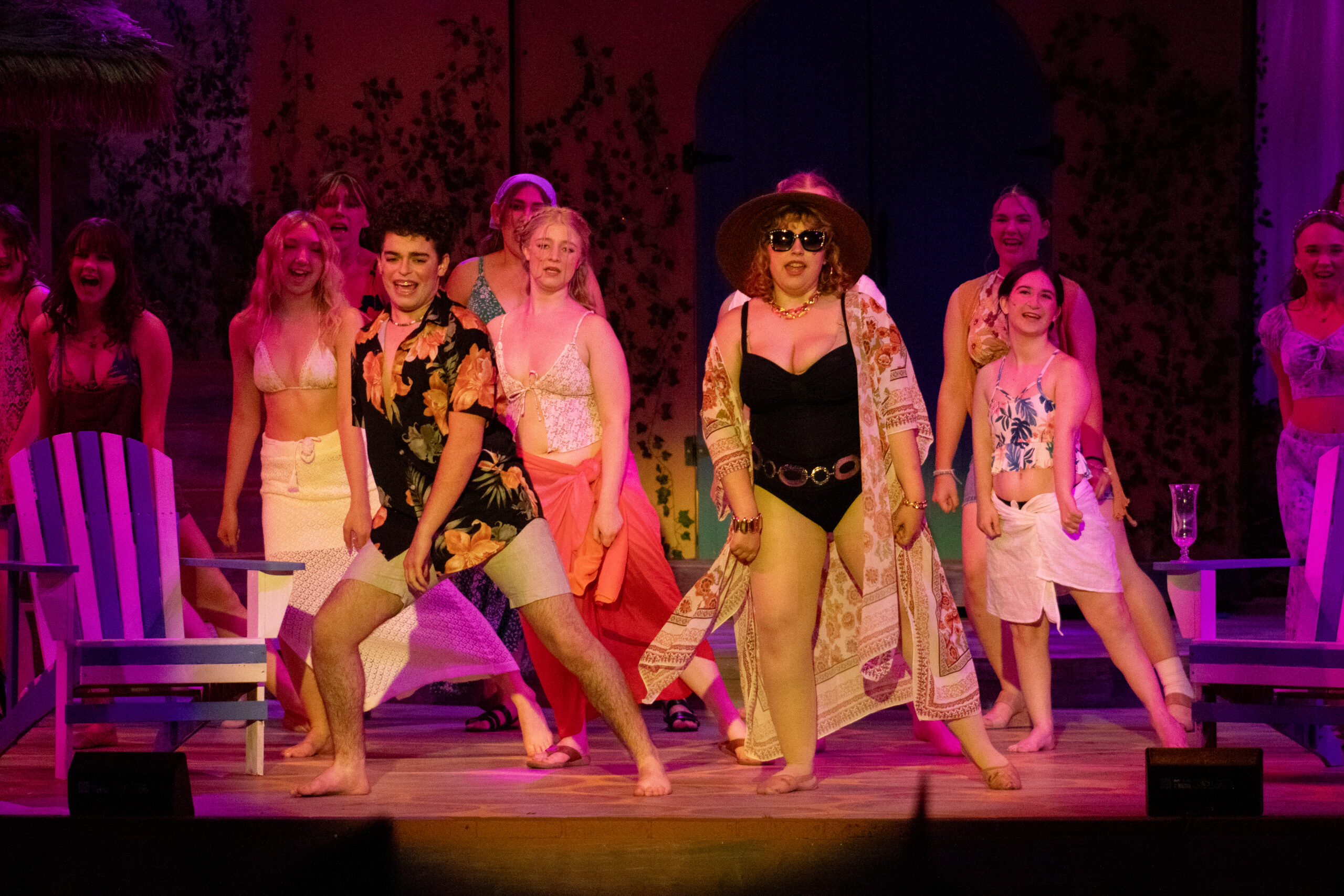The Verde Valley Archaeology Center hosted a presentation by archaeologist and geologist Chris Coder titled “The Overwhelming Presence of The Landscape: A Snapshot of Archaeology Inside The Grand Canyon” on Wednesday, Jan. 10.
The talk was held in conjunction with VVAC’s current main exhibit, “One Canyon: Three Worlds — Inside the Grand Canyon National Park Collection.”
Coder spent several years as a project archaeologist for Grand Canyon National Park in the 1990s and undertook more than 60 river trips in that time. He also remembers being a frightened 5-year-old when his relatives threatened to send him on a train to the Grand Canyon when he was old enough.
When he was 18, Coder did indeed take a train to see the Grand Canyon and was stunned and overwhelmed enough to decide to go to graduate school at Northern Arizona University in order to be able to backpack the Grand Canyon.
Coder said that the canyon is not just deep, but very long, adding to its overwhelming presence, and that people have to be in groups to be able to survive down there, with the main threats being drowning, starving and freezing to death. He pointed out the small strip of vegetation that the earlier inhabitants had available for farming.
The canyon contains an important Hopi salt mine that was used by prehistoric Puebloans, as the pure salt was highly desired for food preservation. The mine retains symbols inscribed by various Hopi clans that have visited the site.
Early people relied on plants more than anything else, Coder said, stressing the importance of ethnobotany and plant lore. Plants can be used to obtain insight into tribal life, and Coder likened this use of plants to laboratory experimentation.
Coder showed a photograph he had taken of a handful of artifacts that he once found within a few feet of where he was standing, primarily potsherds. The sherds included the remains of repaired vessels as well as of vessels that had been traded into the canyon. Coder said that there were 150 years’ worth of artifacts found at that one small site.
Many artifacts were perishable, such as baskets. Coder said that in his entire career as an archaeologist, he only ever found part of one basket. These were often eaten by rodents and insects. Coder pointed out that Apache basket designs were never symmetrical and contained intentional flaws, while Yavapai basket designs were always symmetrical. A large basket could take six to seven months to finish.
He also showed an image of a large rock inscribed with petroglyphs that he documented in the canyon. One panel had six different depictions of bighorn sheep carved by six different cultures. Another bore what he called a “honky glyph,” which was done by a Mormon cowboy in the early 1900s. Coder inferred that it was done by an artist sitting on a horse, as it was about seven feet above the ground.
Other photographs from an excavation project Coder jokingly compared to the disorder of an ADOT project. He explained that excavations are meticulous procedures during which everything gets sifted through a fine screen. He added that there are many rich sites within the central corridor of the canyon that are still virtually untouched.



